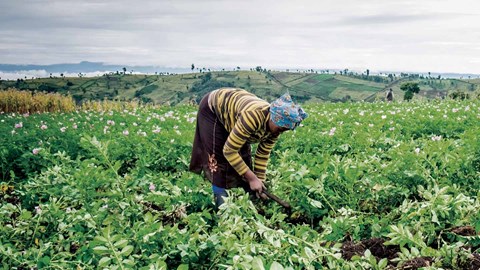A couple of the critical aspects essential for the acceleration of agricultural growth are information and knowledge which can guarantee increased production coupled with efficient distribution and marketing practices. To this end, mobile technologies have proven their capability to assist farmers in total farming activities ranging from production to sales and beyond. Studies in countries such as Sri Lanka have discovered that farmers were able to substantially improve their incomes using simple mobile phone applications where 40 per cent of the crop loss was avoided with timely interventions made possible by using the applications.
For quite a while, Kenya represented among the world’s most dynamic agricultural portable software development environments with tremendous possibilities for innovative and new applications with a strong software development system that has led technology giants to invest their resources into enhancing and further diluting the potential of this dynamic mobile app landscape. However, with over 180 million cellular phone users, Nigeria represents an even greater route for mobile gaming.
These and several other variables of Africa’s mobile revolution illustrated by inventions such as mobile innovations like M-Pesa and the obvious success of this very simple e-wallet method of Nigeria from the last decade showed the promise of mobile services. Nowadays, mobile phones are owned by even more people and thus applications will be accessed more on mobile devices than any other stage. At the exact same time, there are many inventions and services provided through the mobile avenue.
Read Also:Project financing mechanism: Option to Nigeria’s infrastructural deficit
Whereas cellular programs are typically viewed from the perspective of smartphones as opposed to feature phones, it is of fantastic interest to note that for the previous two decades, cellular applications have been developed in developing nations for the conventional second generation (2G) cellphone for a wide range of services such as agriculture among many others. However, we should observe the rapid change of mobile networks evolution is easing so much change in cellular applications. That is referring to the shift from 2G to EDGE, to 3G and then to 4G/LTE. Mobile programs are being enlarged and scaled to do much more.
It’s also notable that an impeding factor to the penetration of smartphones in Africa is broadband, the availability of which decides a good deal. Many of the developing countries have no or low 3G (and currently 4 and 5G) penetration with significant obstacles in costs of both purchases and data downloads. All in all, nearly all cellular programs are lifestyle and entertainment concentrated provided for the mass customer base at a minimal cost. This is a sign it will be challenging to develop a cell app targeting a specific sector, for instance, agriculture. Mobile apps that are targeted for developmental purposes are slow in revenue generation and slower to attain financial sustainability.
Meanwhile, the overall market for mobile programs has seen such remarkable and exponential growth over the past decade and is growing at an equally rapid rate evidenced by the increasing amount of consumers ranging from individuals to businesses that continue to guzzle innovative applications by the millions making it really hard to measure the marketplace. Irrespective of the limitations and opportunities, using mobile telephones to enhance agriculture will visit the accomplishment of a very critical factor in virtually any industry that involves speed and convenience. Indeed, cellular phones offer this at a remarkably low price that overlooking it will be detrimental to the total agriculture ecosystem.
Another huge benefit of using cell phones to reach farmers is the unbelievable opportunity to provide and catch personalised information to individual owners of mobile phones. This is not only a great opportunity for effective solutions to a diverse selection of individual difficulties but an opportunity to comprehend problems down to the most minute of their details and the way they influence the farmer as well as the produce.
Mobile phones are cheaper to get compared to other programs such as the aforementioned touchscreen, a setup to which will be more expensive than it might to deploy into a larger amount of cellular phones. The range of functionalities reachable using cellular telephones is a large one, especially on the smartphone which has many features like cameras and sensors. Also, even basic features like voice communication put the mobile phone at more advantage to use than other platforms.
Conclusively, this incredible rise of mobile technologies is fastest in developing nations like ours where people have just as much, or even bigger, information needs as their counterparts in developed countries. Agriculture represents one of the most crucial sectors for cellular intervention, and for each of the reasons emphasized, Nigerian agriculture stands to reap fantastic rewards if cellular technology is utilised. Thus, we shouldn’t relent in our adoption, usage and development of mobile technologies for agriculture.
![]()


